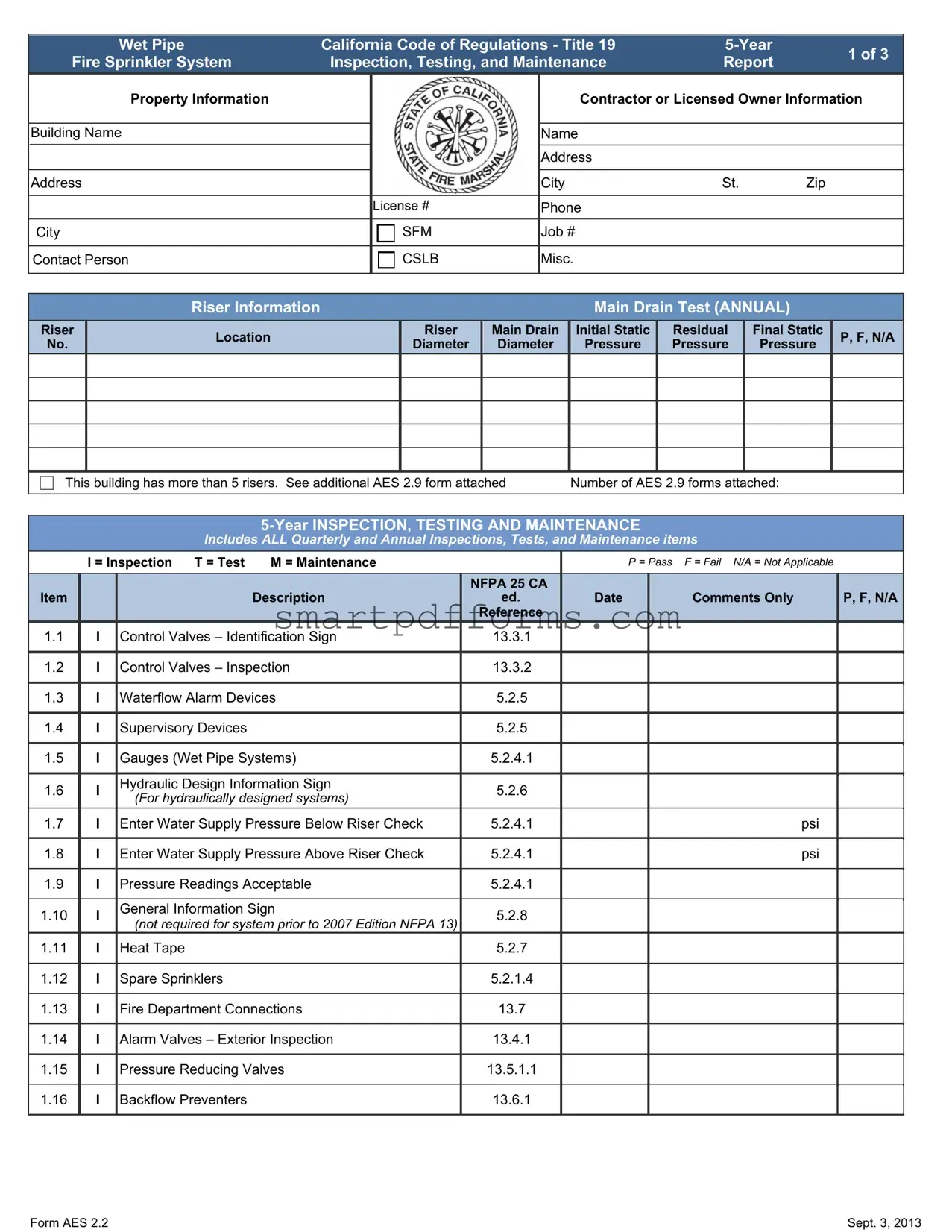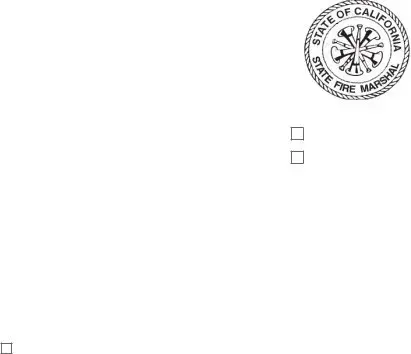Blank 5 Year Fire Sprinkler Inspection PDF Template
The 5 Year Fire Sprinkler Inspection form serves as a comprehensive report for the inspection, testing, and maintenance of fire sprinkler systems in compliance with the Wet Pipe California Code of Regulations - Title 19. It is a critical document ensuring the operational integrity of fire sprinkler systems over a five-year period, incorporating all quarterly and annual inspections, tests, and maintenance tasks. To ensure your sprinkler system is up to code and fully operational, fill out the necessary form by clicking the button below.
Make This Document Now



